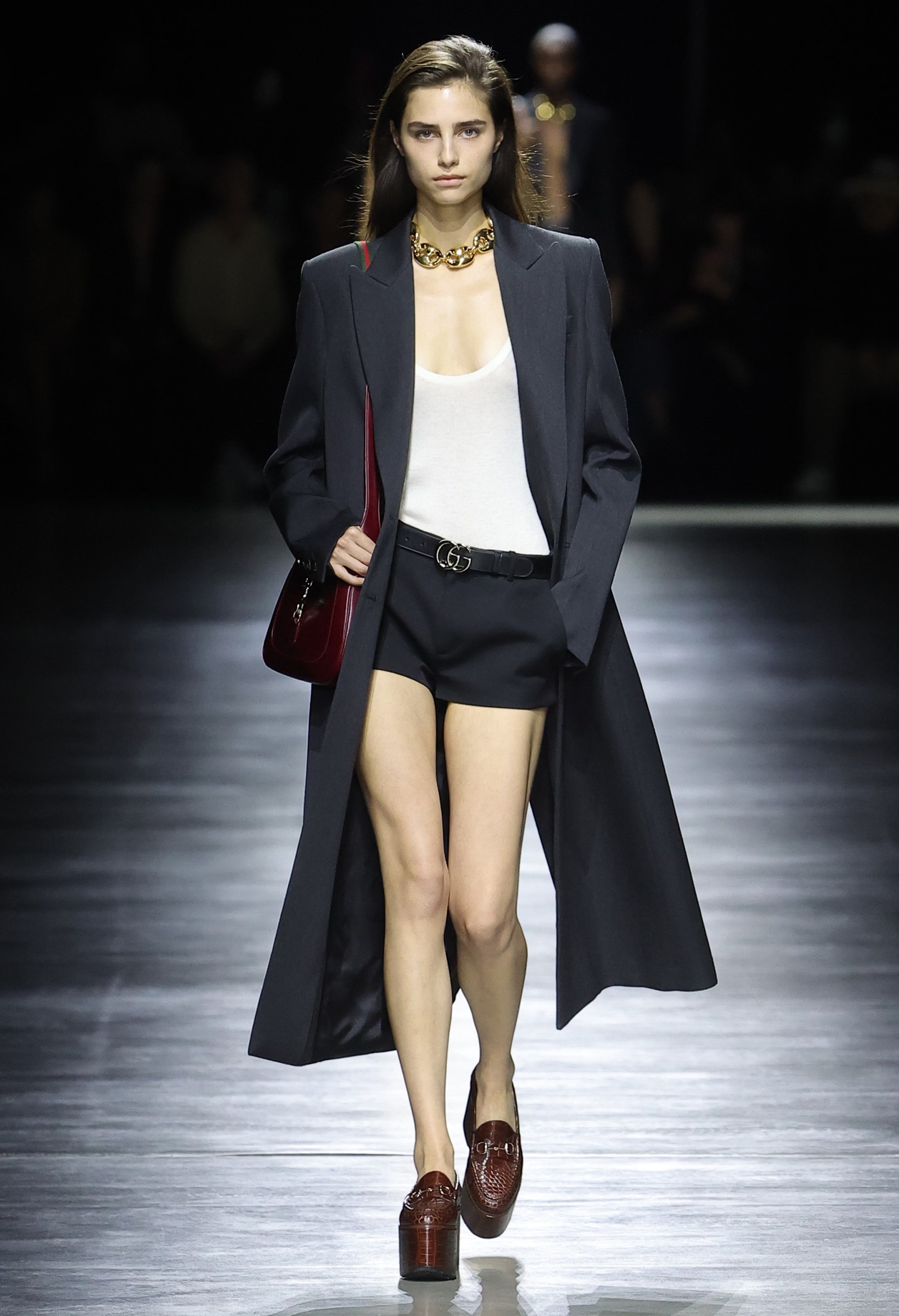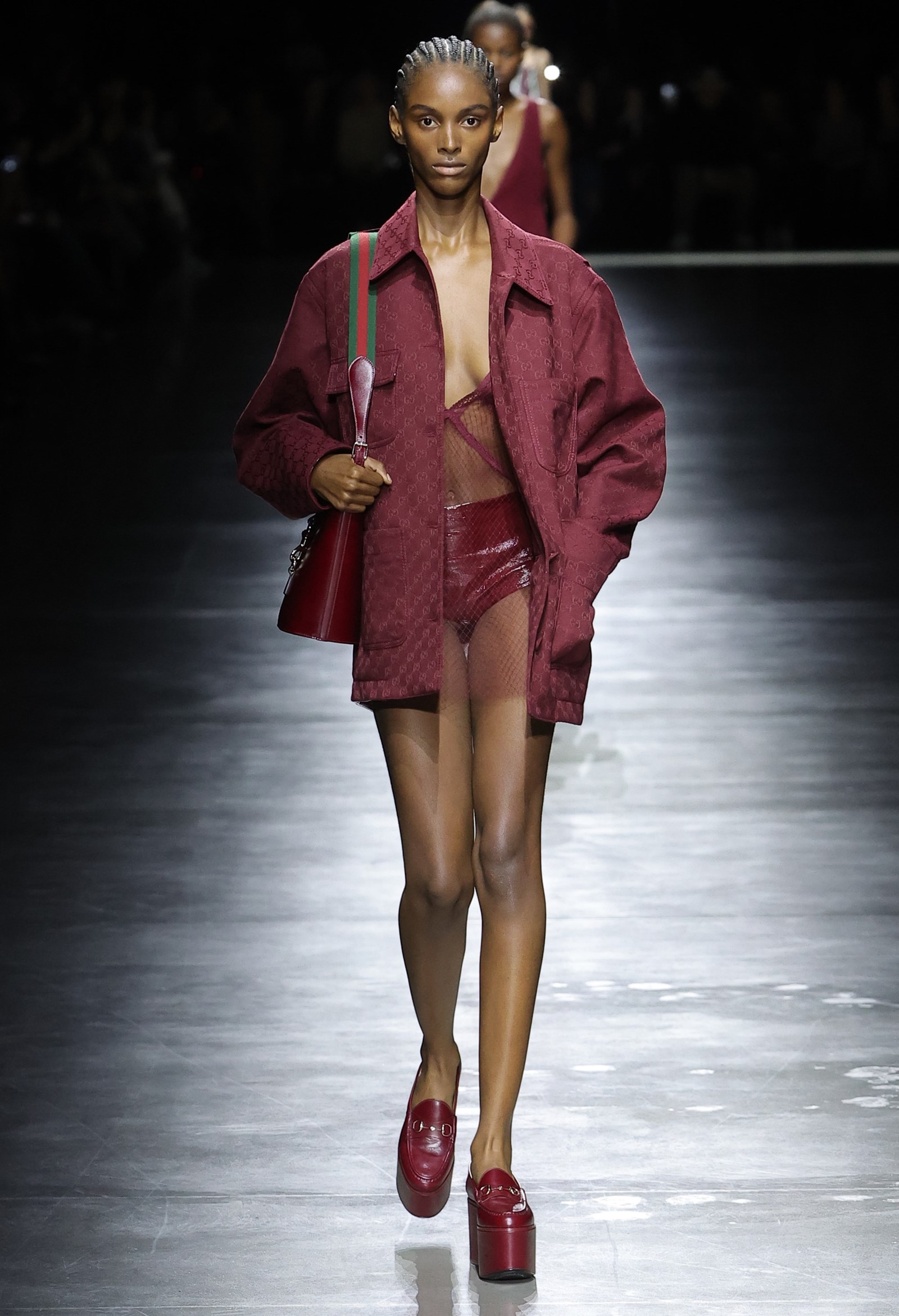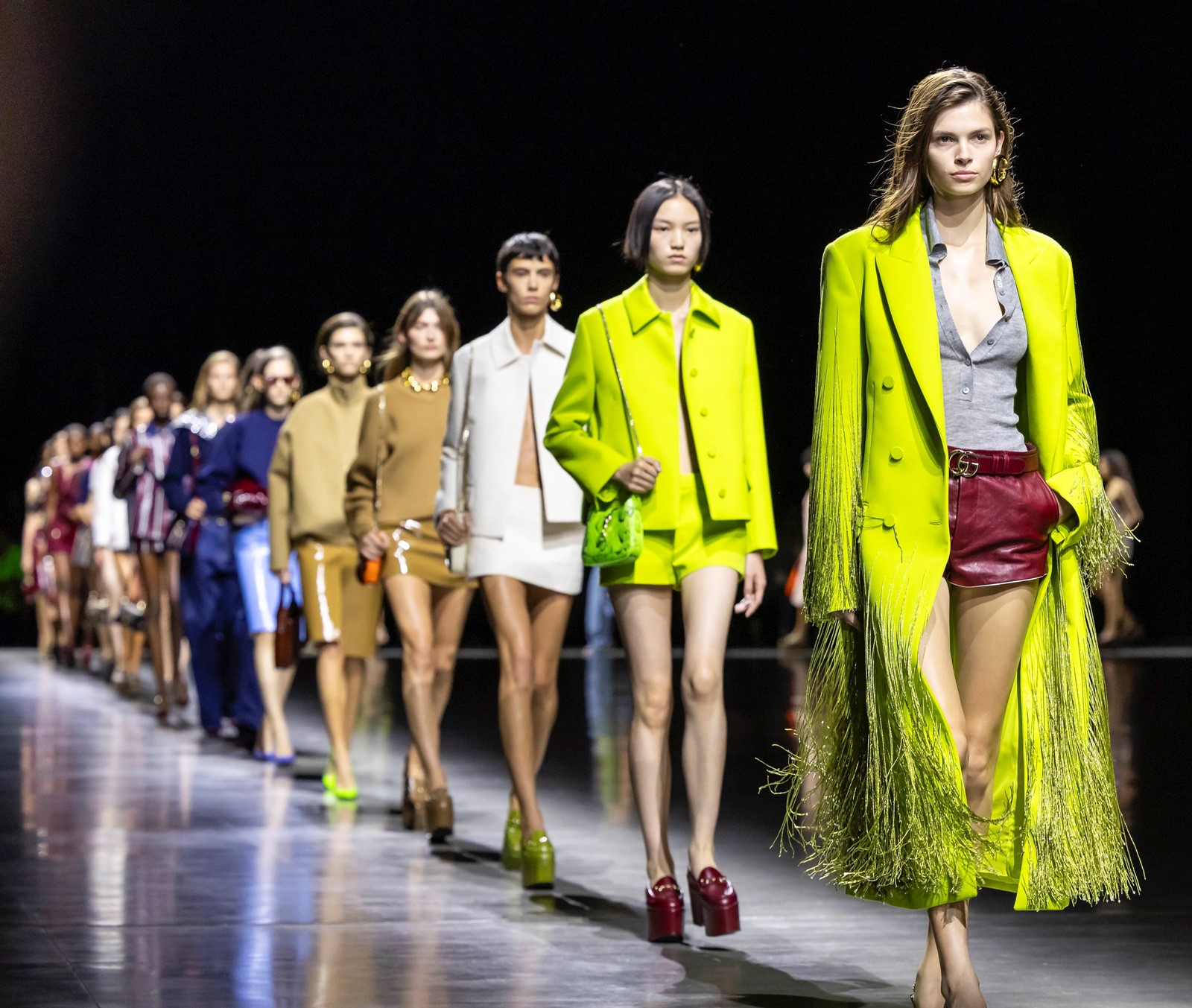Sabato De Sarno had intended to make his debut as creative director of Gucci on the streets of Milan – literally, in the Brera area, known as the artists’ quarter of the city. “It’s a story of joy of life,” read a manifesto, in De Sarno’s own words, to be placed on every seat. “Of passion, of humanity, of people, of real life.” But showcasing that roaming the city streets was not to be – even Gucci can’t control the weather – so, instead, everything was stripped away last-minute for this first show, presented in a gargantuan hall in Gucci’s out-of-town headquarters. What that served to do, of course, was to focus attention purely on the clothes – and while they were removed from that intended real-life context, the result was to emphasise that this wasn’t just a collection of pieces intended for the street, but a brave and bold reset for the brand Guccio Gucci founded some 102 years ago.
The label is celebrating its centenary-and-a-bit with a touring exhibition, Gucci Cosmos, the next leg of which is due to open in London at the start of October. That roams through Gucci’s archives and identities, from its beginnings as a luxe luggage maker through to its current behemoth position as a titan of modern luxury: De Sarno is responsible for writing the next chapter. And, while there were references to the storied past of the house and its enviable heritage throughout this first show, the phrase that came to mind, constantly, was clean slate. De Sarno focused on tailoring, slick in polished wool, used for coats and blazers and slender, short dresses emphasising a 60s legginess.


The 60s, as Gucci geeks know, was a pivotal era when the name first began to resonate globally – Gucci’s first US boutique opened in 1953, and a decade later Jackie Kennedy began sporting a Gucci Hobo bag that became so identified with her ever-emulated style the house rechristened it in her name. When Tom Ford took the reins in the mid-90s, he made his mark by resurrecting styles associated with that time: Gucci may not have been showing clothes back then, but allying modern Gucci with Mod Gucci made total sense given people’s associations and allusions. There was also a message of sexual liberation and optimism in that decade’s clothes, one that came to cling to Gucci too.
De Sarno revisited both the bag – reimagined and reworked – alongside other 60s notes. But only the vaguest riffs and whiffs, and many via Tom Ford, too, to root the look in the history of Gucci. He also played with the rest of Gucci’s loaded iconography – snaffle loafers, blown up with big thick platforms, double-Gs on belts and imprinted across leather, while the webbing strap was spit out in patchworked python and also loaned its specific shade of burgundy-red for a new house colour Gucci called ‘ancora’. That adverb means both still, and again – the idea of both continuity and renewal, central to a heritage house. In a sense, although De Sarno was wiping the slate clean, he was also making sure not to erase the identity, nor the soul. It was a smart first step – not a rebranding, but a reconsideration and reassessment. The interesting thing will be to see how he continues to build on this foundation, to make Gucci his own.






